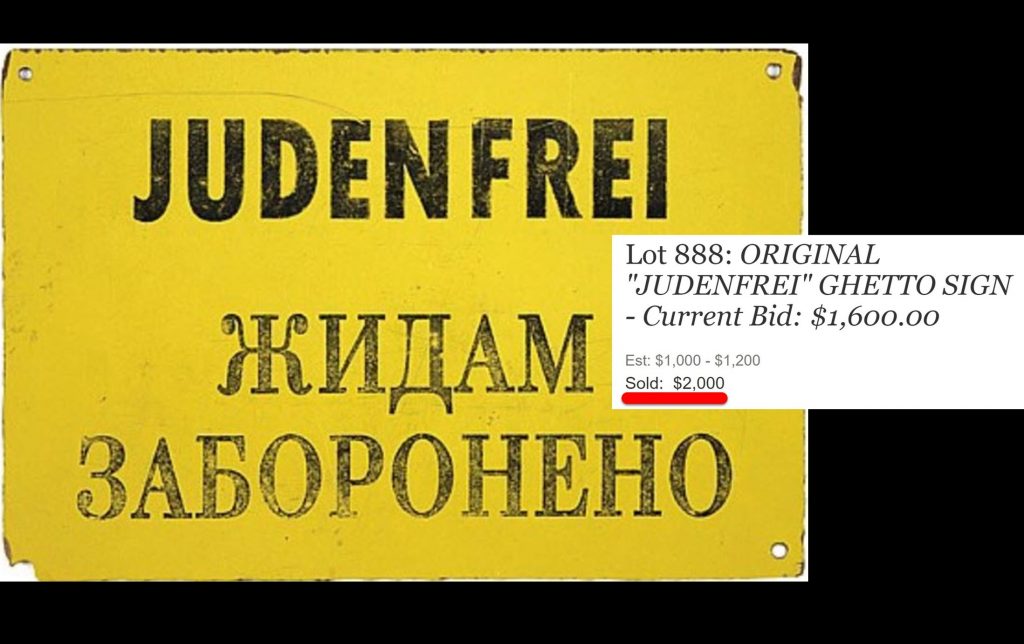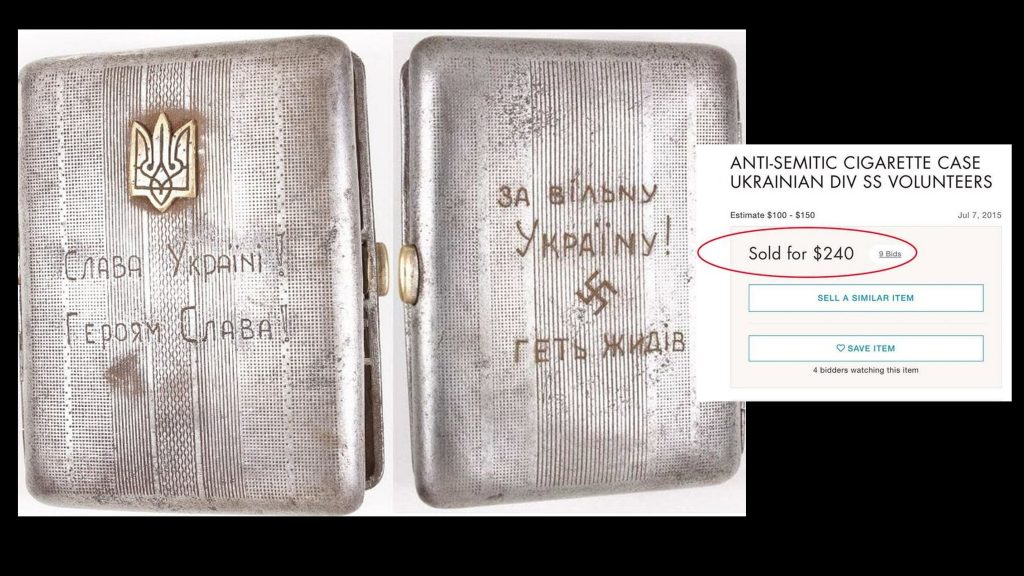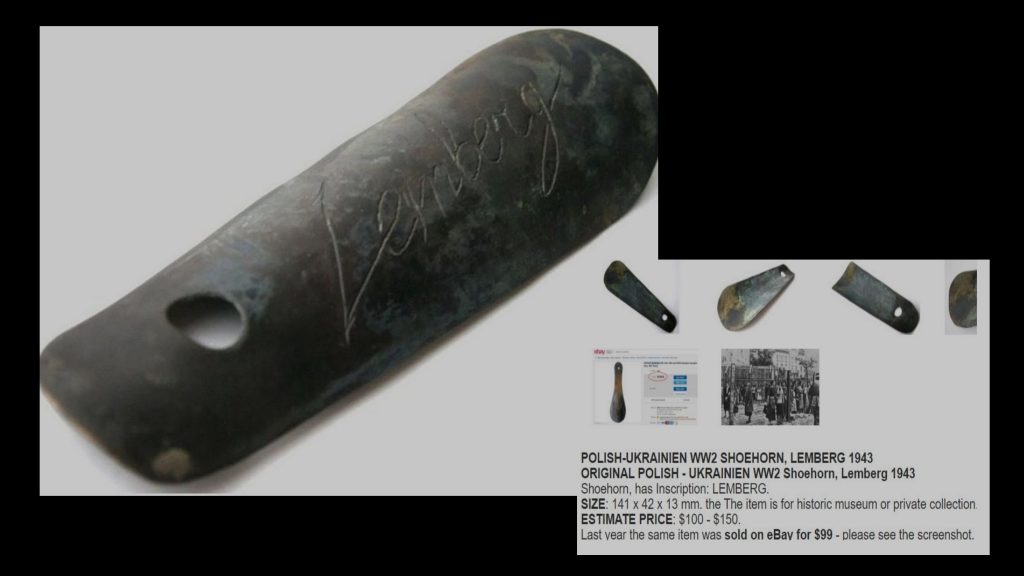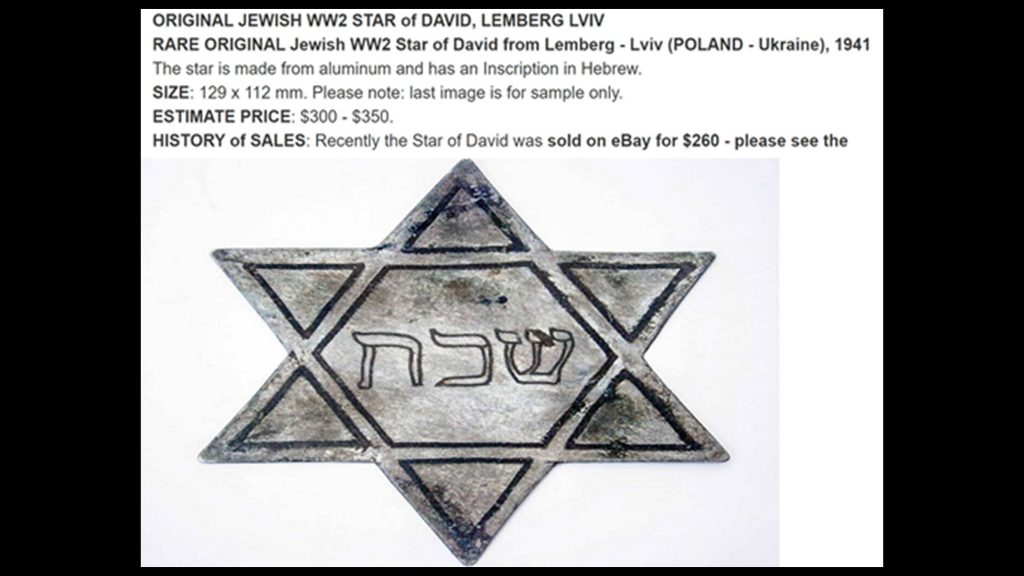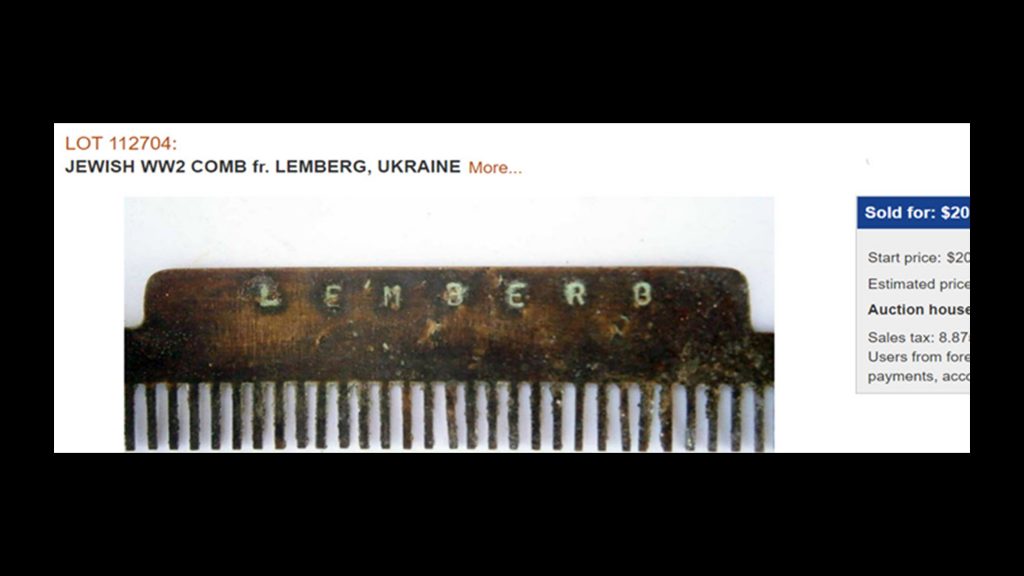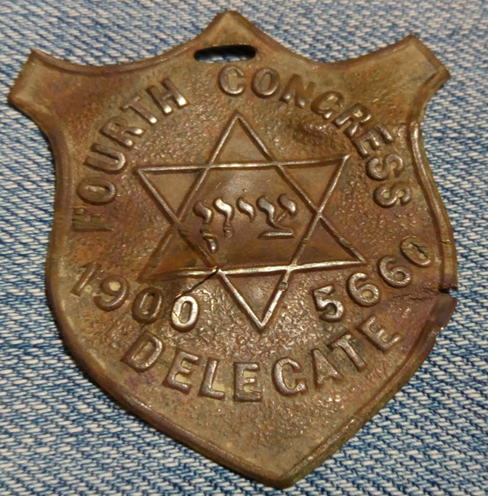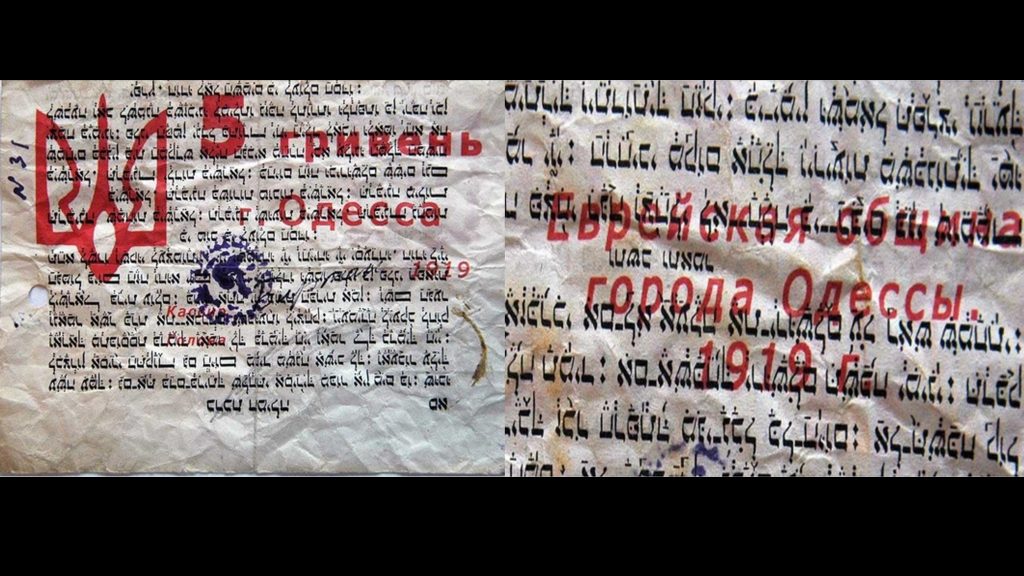Ukrainian-Jewish fake antiques
The growing interest in Ukraine's Jewish heritage in recent years and the broad coverage in the media and scholarly circles of the problematic pages of Ukrainian-Jewish relations, including the Holocaust, has sparked a demand for antiques and other "historical souvenirs." However, the demand for such rare goods exceeds supply and has led to fake Ukrainian-Jewish antiques and artifacts of doubtful provenance frequently appearing on the market for such goods.
I have a general interest in Judaica, particularly Ukrainian Judaica. I therefore regularly check electronic auction catalogues from various countries. In this article, I offer several striking examples of counterfeit items that I have spotted. The majority of these fakes concern Lviv, Kyiv, and Odesa, the Ukrainian cities that attract the largest number of foreign tourists and which have a rich history of Jewish communities.
The first illustration above shows a wooden tablet with an inscription on a yellow background stating "JUDENFREI" and "Jews are forbidden." According to the description of the lot, this tablet hung at the entrance to a ghetto located on the territory of Ukraine. "The original sign, which was removed from a Ukrainian museum and bears the original museum tag with the catalogue numbers and a description, is in excellent condition. A rare relic," say the organizers of the auction in the American state of Connecticut.
But there are some striking inconsistencies: the German-language line that says JUDENFREI (free of Jews) does not correspond to the Ukrainian text, which is written in a modern computer font that could not have existed in the 1940s. "Removed from a Ukrainian museum" is also nonsense, as is the yellow background of the sign, whose brilliance and freshness have been well preserved after nearly eighty years. As you can see from the illustration, someone made a killing with this fake sign: the painted scrap of plywood was sold for two thousand dollars!
Here is a second easy way to make a sale. You take a very old cigarette case made out of cheap metal that costs a dollar, you engrave some antisemitic text on it, then you affix a trident [tryzub, the national emblem of Ukraine—Trans.], and you have yourself a lot entitled "Antisemitic cigarette case of the SS Ukrainian Division." The auction organizers are so clueless about the features of their lots that they wrote the following description of the trident: "An unknown brass emblem is attached to the front part of the case."
The date that this cigarette case was put up for auction in the state of Maryland is very interesting: 18 February 2014, right in the midst of the dramatic events that were unfolding on the Maidan in Kyiv. Far be it from me to say that the "hand of Moscow" was involved in producing these counterfeit items. Most likely, this was a commercial response to the uproar in the Russian and Western media around the topic of "Ukrainian neo-Nazis on the Maidan." The lot was not sold the first time around but found a buyer in July 2015 who paid 240 dollars.
On the whole, the production of fakes made out of metal has turned into a kind of industry. Often, the manufacturers of such items use Lviv/Lemberg motifs. It is likely that these "folk craftsmen" live in the capital of Galicia. Lviv, which is one of the largest historical centers of Ukraine, attracts many foreign tourists who eagerly snap up "souvenirs" relating to Judaica and the Holocaust.
In this respect, Lviv is following in the footsteps of its Polish neighbor, the city of Cracow, where the release of Steven Spielberg's film Schindler's List in 1994 sparked a huge demand for "genuine articles" from the Cracow ghetto and talented metal artisans and engravers are satisfying the demand among Western tourists.
It is one and the same scheme. At a flea market, you find an old, darkened, or rusty item, for example, a shoehorn. You engrave the word "Lemberg" or "Lemberg 1943" on it. Then you make a big deal of offering it to a naive Western tourist or posting it with a caption about the Holocaust on some second-rate auction site in Small Town, USA.
Or a six-pointed star is simply cut out of an old piece of tin or aluminum. Then the engraver etches a Hebrew word on it. Then this "artifact" is put up for auction in the small city of Blaine, Washington. Only those who know Hebrew script knows that the letters "Bet" and "Tav" in the word "Shabbat" are written somewhat differently. But the engraver mechanically redrew the letters from a card without understanding the nuances of Hebrew script. All this is accompanied by the words "Lemberg Lviv 1941" in order to sell a "genuine Star of David" for some two or three hundred dollars.
You can also take an old hair comb, weld some new letters—Lemberg—onto it and offer it to trusting Americans from the sticks as a "genuine article from the Lviv ghetto, 1941."
In the category of "genuine but counterfeit" artifacts, I would include antisemitic Nazi leaflets in the Ukrainian language. Their "authenticity" lies in the fact that such leaflets were actually disseminated by the German occupation authorities in 1941–1944. But these leaflets are counterfeit because they are modern copies that were scanned from the originals and reproduced on a printer. Later, the sheets of paper were treated with chemicals to age the paper artificially.
I saw these two leaflets, which had seemingly yellowed with age, openly sold in lots together with other antiques on Andriivsky uzviz in Kyiv, the most bustling place in the capital, flooded with tourists.
Excluded from the category of fakes are genuine Jewish articles, whose problematic nature lies in the fact that they were obviously removed from mass graves of Holocaust victims in Ukraine.
For example, in December 2020, a resident of the town of Novovolynsk, in Volyn oblast, who owns professional instruments used for detecting the presence of metal objects in the ground, reported the supposedly accidental discovery "in a field" near his town of a metal badge belonging to a delegate to the 4th World Zionist Congress that took place in London in 1900. This congress was attended by dozens of participants from Ukraine. Later, this badge was sold on the Ukrainian online auction site Violity for eighty dollars.
By far, the most visible and most brazen fakes that I have come across are two examples of "banknotes" from Odesa. The creators of these counterfeit banknotes simply tore pages out of a contemporary Jewish prayerbook and used chemicals to age the paper. Then they added a stamp with a trident and the denomination of five hryvnias; in the second case, the banknote bore the stamp "of the Jewish community."
The English-language text accompanying these items states that the first "banknote" is an example of the use by Ukrainian pogromists of Jewish texts for printing their money in 1919. The second "banknote" indicates that in the chaos of the Civil War, the community of Odesa was issuing its own banknotes by putting stamps on pages from Jewish prayerbooks.
These audacious fakes were offered to foreigners for dozens of dollars apiece. This type of production conforms exactly with the myths and stereotypes about "terrible Ukrainians." A potential buyer could imagine a picturesque scene of Ukrainian pogromists smashing their way into a synagogue, then stamping tridents and hryvnia denominations right on the texts of Jewish blessings.
Incidentally, in both cases, the stamps were placed on pages that were turned upside down. Clearly, the modern-day creators of these fakes from Mala Arnautska Street [in Odesa] are not familiar with the Hebrew alphabet.
Text and photos: Shimon Briman (Israel)
Translated from the Ukrainian by Marta D. Olynyk
Edited by Peter Bejger.







